OPINION
Black history informs the future of organized labor
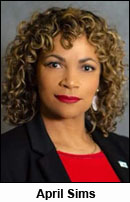 By APRIL SIMS
By APRIL SIMS
(Feb. 26, 2019) — Every February, as a nation we reckon with our collective history.
We take this month to honor the significant contributions of Black Americans to this country, and to recognize the stories of Black Americans that have been overlooked, unacknowledged, or ignored by our dominant culture and history. We take these 28 days to acknowledge what our dominant culture leaves buried in our history; that even before its founding, our country has been brutally and intentionally divided by race.
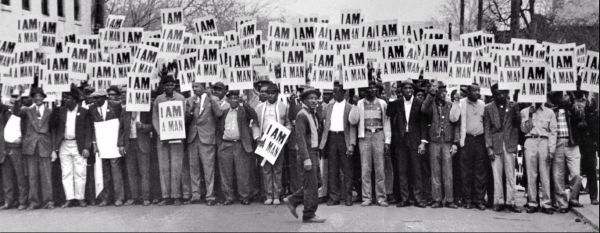
The labor movement has never been immune from racial divisions; an unflinching look at the history of labor over the last 70 years lays bare the many ways that labor as a group has not been on the frontlines in the fight for equity. Historically, our hesitance to step into the fray has weakened our collective strength as workers.
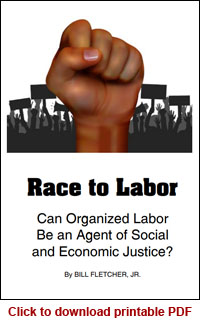 “Like much else in America, workers of color serve as the canaries in the coal mine when it comes to changes in the economy,” writes Bill Fletcher in Race to Labor: Can Organized Labor Be an Agent of Social and Economic Justice? (That important publication, produced by the Washington State Labor Council, AFL-CIO, can be downloaded here, or you can order a printed copy by calling 206-281-8901.)
“Like much else in America, workers of color serve as the canaries in the coal mine when it comes to changes in the economy,” writes Bill Fletcher in Race to Labor: Can Organized Labor Be an Agent of Social and Economic Justice? (That important publication, produced by the Washington State Labor Council, AFL-CIO, can be downloaded here, or you can order a printed copy by calling 206-281-8901.)
The dramatic changes to the American economy caused by the rise of globalization in the 1970’s were felt earlier among workers of color. Labor’s failure to respond to these job losses as they happened left labor unprepared to fight globalization as the worst impacts began to be felt by all workers. Anti-worker politicians and moneyed interests exploited the moment, pushing union-busting policies.
Of the 28 states that currently have anti-worker “Right-to-Work” laws, 19 put them on the books during the Jim Crow era. With the exception of Maryland and the District of Columbia, every state where Jim Crow governed currently has Right-to-Work laws on the books. To this day, the racist architects of anti-worker policy use racial divisions to scapegoat workers of color to their white coworkers, playing on prejudice to obscure the real threat to the American worker: corporate greed.
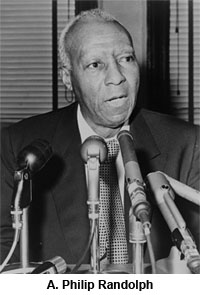 Despite encountering apathy and resistance, black leaders have called the labor movement to critically look at the role of organized labor, of its responsibilities to America’s workers. A. Phillip Randolph’s work forming the Negro American Labor Council played a central role in one of the landmark civil rights actions of the era, the March on Washington. The involvement of Black unionists in this action built the pressure needed to push the AFL-CIO to support the 1964 Civil Rights Act.
Despite encountering apathy and resistance, black leaders have called the labor movement to critically look at the role of organized labor, of its responsibilities to America’s workers. A. Phillip Randolph’s work forming the Negro American Labor Council played a central role in one of the landmark civil rights actions of the era, the March on Washington. The involvement of Black unionists in this action built the pressure needed to push the AFL-CIO to support the 1964 Civil Rights Act.
This sort of leadership from the margins calls upon the dominant culture to consider new ideas, new frameworks, and new conceptions of our shared reality. This leadership offers perspective, makes space for authenticity and growth, and maintains a deep commitment to breaking down the barriers to racial equity that confine and limit us all.
I am the first Black Woman executive officer of the Washington State Labor Council, AFL-CIO. To mark this occasion is to celebrate the legacy of Black leadership in the labor movement, the central role Black organizers have played in achieving our victories at the bargaining table and on the ballot, and the rising generation of Black and Brown unionists ready to lead us forward. To celebrate my leadership is to welcome an opportunity to challenge our own perceptions of what leadership looks like, to reflect on what we expect from our leaders, to question the rules, and to demand not just a seat at the table, but to be dealt into the game.
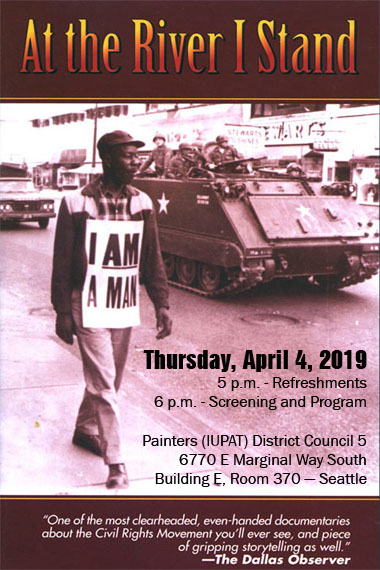 As this month of reflection comes to a close, we rededicate ourselves to the work. The WSLC’s 2017 Resolution on Race and the Labor Movement lays plain our history — that “race and the course of organized labor are inextricably bound and have been since workers made their first appearance on the shores of North America.” It enumerates our current challenges — that “organized labor needs to develop a robust counter narrative to that offered by right-wing populism and has yet to do so.” And it lays out the work we must take on — that “unions need to integrate racial justice into every area of their organization… to wholeheartedly combat the divide and conquer strategy of our enemies.”
As this month of reflection comes to a close, we rededicate ourselves to the work. The WSLC’s 2017 Resolution on Race and the Labor Movement lays plain our history — that “race and the course of organized labor are inextricably bound and have been since workers made their first appearance on the shores of North America.” It enumerates our current challenges — that “organized labor needs to develop a robust counter narrative to that offered by right-wing populism and has yet to do so.” And it lays out the work we must take on — that “unions need to integrate racial justice into every area of their organization… to wholeheartedly combat the divide and conquer strategy of our enemies.”
This is a pivotal moment for organized labor. Our economy is changing once more. Without the leadership of unions, workers will once again pay the price. Without leadership from workers of color, we cannot stand united against the billionaires and bosses who threaten our livelihoods and our future.
ALL ARE INVITED to join the WSLC and our community partners for a free screening and discussion of the film At the River I Stand on Thursday, April 4 at the International Union of Painters and Allied Trades District Council 5 at 6770 E Marginal Way South (Building E, Room 370) in Seattle. Light refreshments will be served at 5 p.m. followed by the screening and a program from 6 to about 8 p.m. For more info, call 206-281-8901.
April Sims is Secretary Treasurer of the Washington State Labor Council, AFL-CIO, representing the interests of more than 600 union organizations with approximately 550,000 rank-and-file members.





